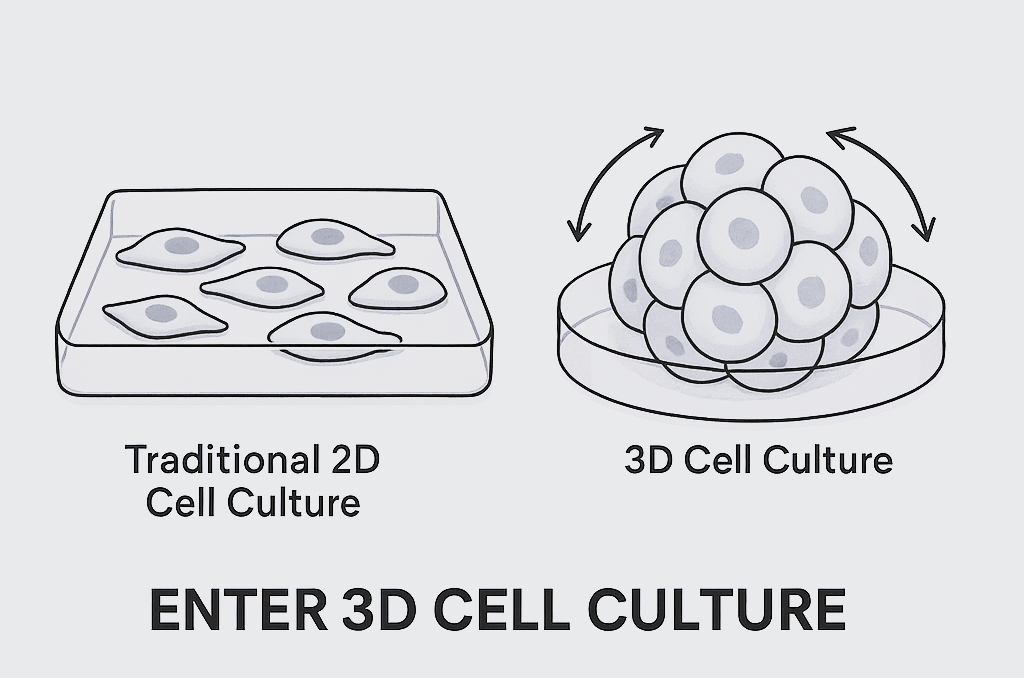
Cancer research stands at the brink of a revolution, driven by innovative technologies that transform our understanding of this complex disease. Among these advancements, 3D cell culture technologies have emerged as a game-changer, enabling scientists to create more accurate and physiologically relevant models of tumor environments. By mimicking the intricate interactions within tissues, 3D cultures allow researchers to unlock the potential of new drug discoveries and effectively study cancer progression, ultimately paving the way for more effective treatments.
As we delve into the profound impact of 3D cell cultures on cancer research and treatment, we will explore how these technologies are enhancing personalized medicine and reshaping the future of oncology. By integrating 3D models into preclinical studies, researchers can tailor therapies to individual patient needs, improving outcomes and minimizing side effects. This blog post will guide you through the impressive advancements in cancer research facilitated by 3D cell culture technologies, showcasing their pivotal role in redefining cancer therapies and paving the way for a brighter future.
Unlocking potential: Explore how 3D cell culture technologies are transforming cancer research
3D cell culture technologies are revolutionizing the landscape of cancer research by providing a more accurate representation of tumors compared to traditional 2D cultures. Researchers can now create complex, tissue-like structures that closely mimic the architecture and microenvironment of actual tumors. This transformation allows for better study of tumor biology, leading to more nuanced insights into cancer progression and metastasis. As scientists delve deeper into the interactions between cancer cells and their surroundings, they uncover vital mechanisms that drive tumor growth and resistance to therapies.
Moreover, these innovative models play a critical role in drug discovery and testing. Conventional methods often fail to predict how a drug will perform in the human body due to the oversimplification of 2D cultures. By utilizing 3D cell cultures, researchers can assess the efficacy and toxicity of potential treatments in a setting that mirrors real-life conditions more closely. This approach not only accelerates the development of effective therapies but also minimizes the reliance on animal testing. With the ability to unlock the full potential of cancer research, 3D cell cultures pave the way for breakthroughs that can ultimately improve patient outcomes and transform treatment landscapes.
Advancements in treatment: The impact of 3D cell cultures on personalized medicine
3D cell culture technologies are paving the way for breakthroughs in personalized medicine by providing a more accurate representation of the tumor environment. In traditional 2D cultures, researchers often struggle to replicate the complex interactions that occur between cancer cells and their surrounding microenvironment. With 3D cell cultures, scientists can create tumor models that closely mimic the behavior of cancers in vivo. This enhanced realism allows for better predictions of how individual patients will respond to specific drug therapies, enabling the development of targeted treatments tailored to each patient's unique cancer profile.
Moreover, 3D cell culture systems facilitate the drug screening process, significantly improving the efficiency of identifying effective therapies. Researchers can easily test a variety of drug combinations on these models, leading to more informed decisions about which treatments to advance to clinical trials. This approach not only shortens the time required to develop new cancer therapies but also enhances their efficacy by focusing on patient-specific responses. As a result, 3D cell cultures are not just revolutionizing basic cancer research; they are also actively shaping the future of personalized oncology, ultimately leading to improved patient outcomes and increased survival rates.
The Next Frontier: Overcoming Challenges to Fully Realize the Potential of 3D Cell Culture in Cancer Research
While 3D cell culture technologies have already transformed the cancer research landscape, several critical challenges still limit their full impact. Issues such as inconsistent reproducibility, limited scalability, and difficulty in fully replicating the tumor microenvironment—including vascularization, immune interactions, and mechanical stress—pose significant hurdles to widespread adoption in drug development and personalized medicine.
Current models often lack standardization, making cross-study comparisons difficult and limiting their use in high-throughput screening. Additionally, many systems struggle to maintain long-term viability or to accurately model the dynamic interplay between cancer cells and the immune system, stroma, or vasculature. These limitations can result in incomplete predictions of drug efficacy and toxicity, creating a persistent gap between preclinical success and clinical outcomes.
However, the field is rapidly advancing. Emerging innovations such as microfluidic organ-on-a-chip systems, engineered hydrogels, and AI-integrated biomanufacturing are being developed to address these gaps. These technologies will enable more reproducible, automated, and physiologically accurate tumor models. Soon, researchers will be able to generate highly customized 3D cultures that replicate patient-specific tumors, including their immune and vascular components, in real-time and at scale.
Overcoming these challenges will have a profound impact. It will enable truly predictive drug screening, reduce late-stage clinical trial failures, and usher in a new era of precision oncology—where therapies are not only tailored to individual patients, but continuously refined based on evolving biological data.
At Aloft Biotechnologies, we are building the infrastructure to make this vision a reality—designing tunable 3D systems that don’t just replicate biology, but actively guide it. As these barriers fall, 3D cell culture will not just support cancer research—it will transform how we treat cancer, bringing safer, more effective therapies to patients faster than ever before.